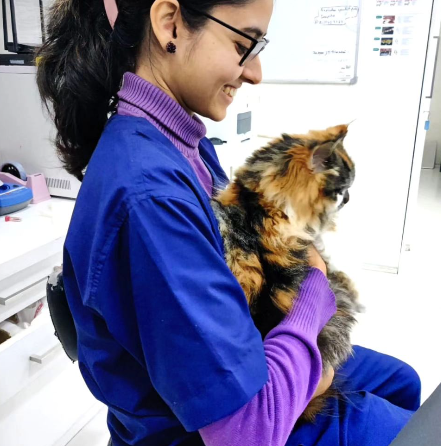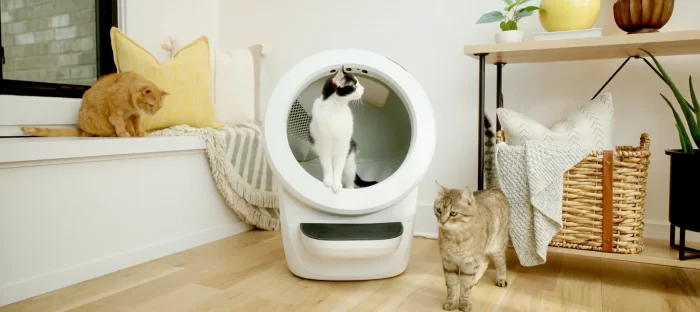When you have more than one cat at home, providing adequate litter boxes can get tricky. Cats are territorial creatures who like to have their own dedicated spaces. With multiple cats, you need to provide enough litter boxes to prevent them from fighting over resources. The general rule is to have one more litter box than the number of cats. For example, three cats would need four litter boxes. However, every home and group of cats is different, so you may need to experiment to get the right setup. In this article we talk about Best Litter Box Solutions for Multiple Cats.
Choosing the Right Litter Box Type
The type of litter box can impact how well it works for a multi-cat home. Here are some top options:
- Self-cleaning litter boxes: These automatic boxes have a mechanism that cycles through the litter after each use, removing waste and clumping urine. This helps control odor and makes cleanup easier with multiple cats. Just be sure the box is large enough for all your cats.
- Top entry litter boxes: Top entry or hood style boxes have a roof over them with a hole for cats to enter through the top. This can help minimize litter scatter from energetic digging. It also provides more privacy, which some cats prefer.
- Jumbo litter boxes: Extra large litter boxes give cats more interior space to move around in. More room means less crowding when cats need to use the litter box at the same time. Go for a box 1.5 times larger than standard.
- Simple uncovered boxes: Basic open trays allow for easy access from all sides. Especially energetic or elderly cats may prefer these over hooded varieties. Get extra high-walled boxes.
Location Tips
Where you place litter boxes matters too. Follow these guidelines when setting up multiple boxes for multiple cats:
- Scatter locations throughout home: Don’t cluster all boxes together in one spot. Have boxes on each floor of the home in different rooms. This allows cats to access one easily when and where they need it.
- Offer privacy: Place boxes away from high traffic areas in peaceful locations. Provide barriers like curtains around boxes or tuck them into closets or alcoves. Avoid loud appliances nearby.
- Keep visible: While peaceful, make sure cats can easily find and access boxes without obstructed pathways or closed doors. Establish consistent locations over time.
- Accommodate preferences: Observe where each cat likes to eliminate. Place boxes to meet their individual preferences while also providing backup options. Not all cats want to share!
Litter Box Accessories
You can further enhance litter boxes for a multi-cat home with handy accessories:
- Litter mats: Mats catch loose litter from paws coming out of the box. This contains mess and makes cleanup simpler.
- Odor control: Litter deodorizers and air fresheners help control smells from increased waste in multiple cat boxes. Automated air purifiers also help.
- Night lights: Low-glow lights help cats find the box at night for easy late-night access.
- Privacy panels: Screens block box view from the rest of the home for shy cats. Panels also help contain litter scatter.
The Right Number of Boxes
As a general rule of thumb, you should have one more litter box than the number of cats in your home. So for a 3-cat household, aim for 4 boxes. However, every situation is different depending on your home layout, cat ages and abilities, etc. Start with the 1+ number guideline, observe how well it works and make adjustments as needed.
With extra boxes in place, litter box problems like inappropriate elimination outside the box greatly reduce. Cats don’t have to wait for or compete over box access. You also minimize bullying and dominant behavior.
Other Litter Box Management Tips
In addition to litter box numbers and setup, keep these maintenance tips in mind:
- Scoop daily: Scoop all litter boxes every 24 hours to remove waste and keep boxes fresh and welcoming to use.
- Deep clean regularly: Deep clean boxes fully with soap and water every 1-2 weeks to control odors and reduce bacteria.
- Use one litter type: Stick to one consistent litter substrate in all boxes so cats don’t show preference for one box over another.
- Monitor issues: Pay attention to litter habits from all cats. Look for signs of discomfort, difficulty, or avoidance that could indicate health issues requiring veterinary attention.
- Adjust as needed: If litter box problems pop up, add more boxes and re-evaluate locations, types of boxes, litter used, cleaning schedule, etc.
With the right number and placement of litter boxes suited to your cats, everyone can easily take care of business! Multiple boxes reduce competition and support cats’ natural inclination towards elimination privacy for a harmonious home. Test different setups and find the right litter box solution for your multi-cat household. I sincerely hope you find this “Best Litter Box Solutions for Multiple Cats” article helpful.

Dr. Hansika Singh is a skilled veterinarian with a Doctorate in Veterinary Medicine and over six years of hands-on experience in the field. Her expertise in pet health is complemented by a holistic approach that prioritizes both physical and emotional well-being. Dr. Singh is committed to providing high-quality care and practical advice to ensure pets lead healthy, happy lives.
As the leading expert on everythingpetstuff.com, Dr. Singh shares her extensive knowledge and insights through this platform and her popular social media channels. Follow her for valuable tips and advice on pet care: Instagram, YouTube, and Facebook.

